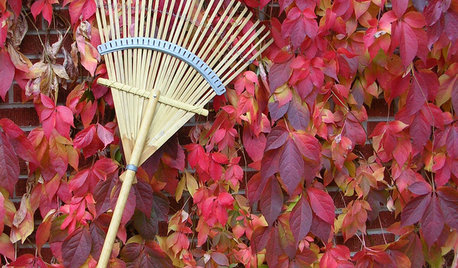Super-ripe Honeycrisp?
bob_z6
12 years ago
Related Stories

DECORATING GUIDES10 Retro Items Ripe for a Revival
Take a trip down memory lane through a world of innovative items from the past
Full Story
EDIBLE GARDENSHow to Grow 10 Favorite Fruit Trees at Home
Plant a mini orchard in fall, winter or early spring to enjoy fresh-off-the-tree fruit the following year
Full Story
ORANGETreat Your Rooms to Pumpkin Pie Orange
Stir some pumpkin colors into your interiors for design deliciousness that lasts well beyond Thanksgiving
Full Story
SUMMER GARDENINGHouzz Call: Please Show Us Your Summer Garden!
Share pictures of your home and yard this summer — we’d love to feature them in an upcoming story
Full Story
SELLING YOUR HOUSEHow to Stage Your Kitchen for a Home Sale
Attract buyers with a kitchen that’s clean, bright and welcoming — no expensive overhaul required
Full Story
EDIBLE GARDENSHow to Add an Apple Tree to Your Edible Garden
Readily available, beautiful and fragrant, apple trees offer four-season interest along with crisp, juicy fruit
Full Story
MOST POPULARHow to Get Rid of Those Pesky Summer Fruit Flies
Learn what fruit flies are, how to prevent them and how to get rid of them in your home
Full Story
EDIBLE GARDENSSummer Crops: How to Grow Squash
Almost foolproof and with cheerful flowers, squash comes in a wide range of varieties to plant in spring
Full Story
GARDENING GUIDESYour November Garden Checklist
What to do around the U.S. this month to help your garden thrive — when you're not admiring fall's brilliant colors, that is
Full Story
KITCHEN DESIGNKitchen of the Week: Grandma's Kitchen Gets a Modern Twist
Colorful, modern styling replaces old linoleum and an inefficient layout in this architect's inherited house in Washington, D.C.
Full StoryMore Discussions







alan haigh
bob_z6Original Author
Related Professionals
Comstock Park Landscape Architects & Landscape Designers · Erie Landscape Architects & Landscape Designers · Fort Lee Landscape Architects & Landscape Designers · Piqua Landscape Architects & Landscape Designers · Garden City Landscape Architects & Landscape Designers · Williamsburg Landscape Contractors · East Haven Landscape Contractors · Monterey Landscape Contractors · Morrisville Landscape Contractors · Palos Verdes Estates Landscape Contractors · Pompano Beach Landscape Contractors · Soddy Daisy Landscape Contractors · South Lake Tahoe Landscape Contractors · West Chester Landscape Contractors · Eastlake Landscape Contractorsalan haigh
kr222
bob_z6Original Author
alan haigh
Konrad___far_north
bob_z6Original Author
alan haigh
bob_z6Original Author
bob_z6Original Author
alan haigh